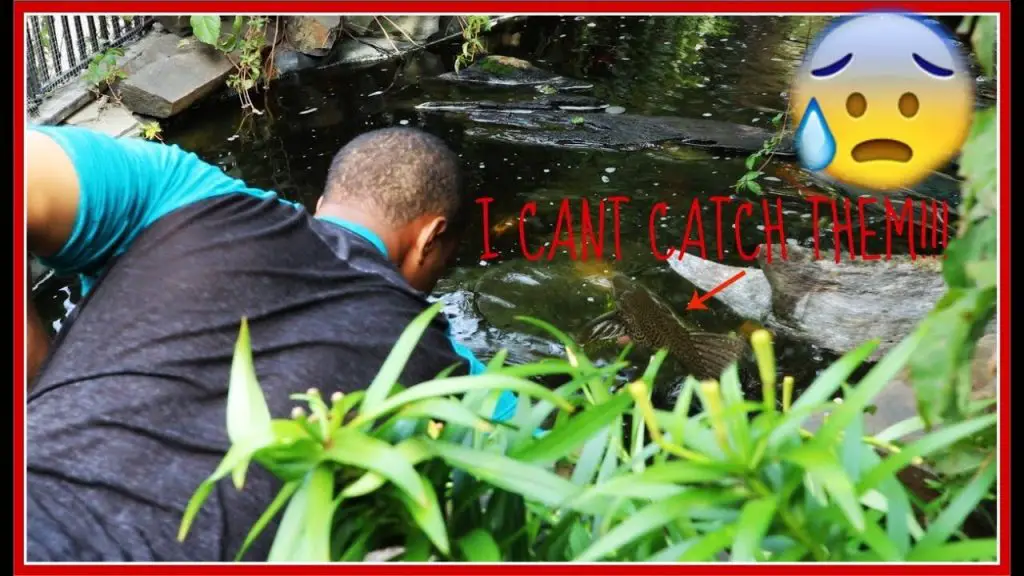Can Plecostomus Live in a Pond?
Plecostomus, also known as plecos, are popular freshwater fish known for their algae-eating habits and unique appearance. Many aquarium enthusiasts wonder if these fish can thrive in outdoor ponds. In this article, we will explore the possibility of keeping Plecostomus in a pond, considering factors such as water conditions, habitat requirements, and potential challenges.
Habitat Requirements of Plecostomus
Plecostomus are native to the Amazon River basin in South America, where they inhabit slow-moving, oxygen-rich waters. In an aquarium setting, they require a spacious tank with ample hiding spots, driftwood for grazing, and a substrate that mimics their natural environment. When considering the possibility of keeping Plecostomus in a pond, it’s essential to replicate these habitat requirements to ensure their well-being.
Water Conditions in a Pond
One of the primary considerations when contemplating the suitability of a pond for Plecostomus is the water quality. These fish are sensitive to water parameters such as pH, temperature, and oxygen levels. Ponds should ideally have stable water conditions, free from pollutants and excessive algae growth, to support the health of Plecostomus. Regular water testing and maintenance are crucial to creating a suitable environment for these fish.
Pond Size and Depth
Plecostomus are known for their large size, with some species reaching over a foot in length. When evaluating the feasibility of housing them in a pond, the size and depth of the pond must be taken into account. A pond should provide ample space for these fish to swim and explore, along with areas of varying depths to accommodate their natural behaviors.
Compatibility with Other Pond Inhabitants
If considering adding Plecostomus to a pond, it’s essential to assess the compatibility with other pond inhabitants. These fish are generally peaceful but may exhibit territorial behavior, especially towards their own species. Additionally, they may not thrive in ponds with aggressive or predatory fish species. Understanding the dynamics between Plecostomus and other pond inhabitants is crucial to maintaining a harmonious ecosystem.
Challenges of Keeping Plecostomus in a Pond
While the idea of having Plecostomus in a pond may seem appealing, there are potential challenges to consider. Ponds are exposed to natural elements and wildlife, which can pose risks to the well-being of these fish. Predatory birds, raccoons, or other wildlife may threaten Plecostomus in an outdoor pond setting. Additionally, extreme weather conditions, such as temperature fluctuations or heavy rainfall, can impact the stability of the pond environment.
Benefits of Keeping Plecostomus in a Pond
Despite the challenges, there are potential benefits to keeping Plecostomus in a pond. These fish are voracious algae eaters and can contribute to maintaining a balanced ecosystem in the pond. Their presence can help control algae growth and promote a healthier aquatic environment. Furthermore, observing Plecostomus in a naturalistic outdoor setting can provide a unique and captivating experience for pond owners and enthusiasts.
Tips for Successfully Keeping Plecostomus in a Pond
If you decide to introduce Plecostomus to your pond, there are several tips to help ensure their well-being and longevity in this environment:
1. Provide Adequate Shelter: Incorporate driftwood, rocks, and aquatic plants to create hiding spots and shelter for Plecostomus in the pond.
2. Monitor Water Parameters: Regularly test and maintain water quality, ensuring that the pH, temperature, and oxygen levels are within the suitable range for Plecostomus.
3. Feeding Considerations: While Plecostomus are adept at grazing on algae, supplement their diet with sinking algae wafers or fresh vegetables to ensure they receive sufficient nutrition in the pond.
4. Protection from Predators: Implement measures to protect the pond from potential predators, such as installing netting or barriers to deter wildlife from accessing the fish.
5. Observation and Maintenance: Regularly observe the behavior of Plecostomus in the pond and perform routine maintenance to address any potential issues promptly.
Conclusion
In conclusion, while it is possible to keep Plecostomus in a pond, careful consideration of the habitat, water conditions, and potential challenges is essential. By creating a suitable environment that meets the needs of these fish, pond enthusiasts can enjoy the presence of Plecostomus while contributing to the overall balance of their aquatic ecosystem. With proper care and attention, Plecostomus can thrive in a well-maintained pond, offering an enriching experience for both the fish and their caretakers.
By taking into account the factors discussed in this article and implementing the recommended tips, pond owners can make informed decisions regarding the introduction of Plecostomus to their outdoor aquatic habitats. With the right approach, keeping Plecostomus in a pond can be a rewarding endeavor, adding diversity and vitality to the pond ecosystem.





